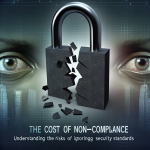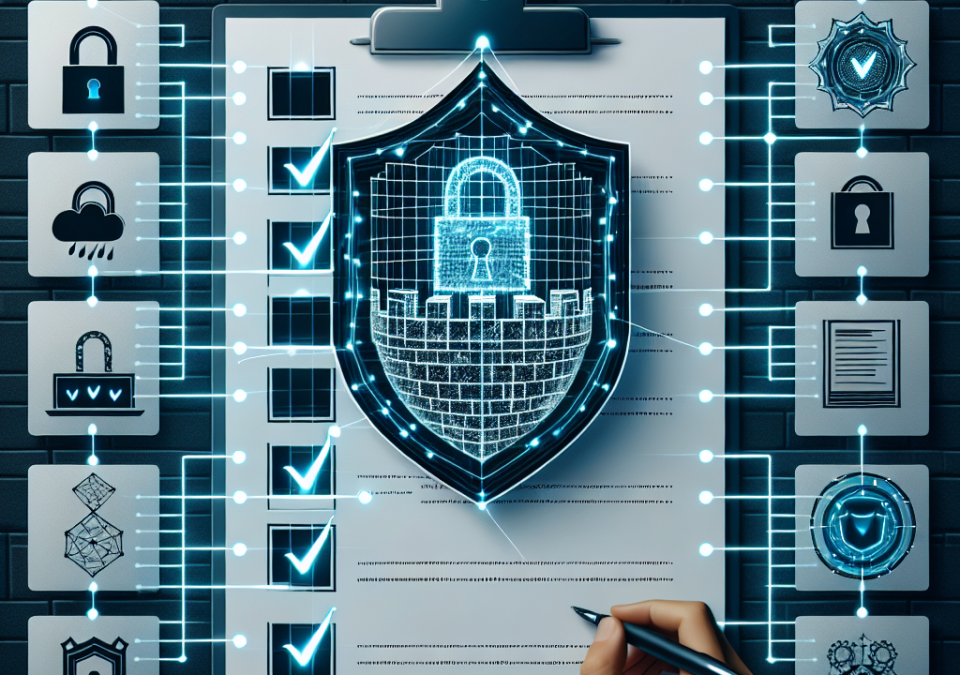
The Cost of Non-Compliance: Understanding the Risks of Ignoring Security Standards
July 9, 2025
Automating Security Compliance: Tools and Technologies for Today’s Businesses
July 10, 2025
In today’s digital landscape, cybersecurity is a vital concern for businesses of all sizes. With increasing cyber threats and stringent regulations, maintaining compliance is not just a legal necessity but also a foundational aspect of protecting your organization. This article provides an ultimate cybersecurity compliance checklist to help ensure that your business stays safe and compliant.
The Importance of Cybersecurity Compliance
Cybersecurity compliance refers to adhering to industry regulations and standards designed to protect sensitive information and ensure the integrity, confidentiality, and availability of data. Non-compliance can lead to hefty fines, legal action, and reputational damage. Establishing a comprehensive compliance framework is crucial to safeguard your business against emerging threats.
Key Cybersecurity Regulations
Before diving into the checklist, it’s essential to understand some of the key cybersecurity regulations that may apply to your business:
- GDPR (General Data Protection Regulation) – A European Union regulation that governs data protection and privacy for individuals within the EU.
- HIPAA (Health Insurance Portability and Accountability Act) – A U.S. law that mandates the safeguarding of medical information.
- PCI DSS (Payment Card Industry Data Security Standard) – A set of security standards designed to ensure that businesses that accept, process, or transmit credit card information maintain a secure environment.
- SOX (Sarbanes-Oxley Act) – A U.S. law establishing new financial reporting and auditing standards for public companies.
The Ultimate Cybersecurity Compliance Checklist
1. Risk Assessment
- Conduct Regular Risk Assessments: Identify, analyze, and evaluate risks to your information and systems.
- Threat Modeling: Understand potential risks, threat actors, and attack vectors relevant to your business.
2. Data Protection Measures
- Data Classification: Categorize data based on its sensitivity and apply appropriate protection measures.
- Encryption: Ensure sensitive data is encrypted both at rest and in transit.
- Backup Solutions: Implement regular automated backups and test recovery protocols.
3. Access Control
- User Authentication: Implement multi-factor authentication for access to sensitive data.
- Role-based Access Control (RBAC): Restrict access based on the user’s role within the organization.
- Account Review: Regularly review user accounts and permissions.
4. Policies and Procedures
- Acceptable Use Policy: Define acceptable and unacceptable uses of company systems and data.
- Incident Response Plan: Establish and document a plan for responding to security incidents.
- Training and Awareness: Regularly train employees on cybersecurity best practices and compliance requirements.
5. Compliance Documentation
- Maintain Compliance Records: Document all policies, procedures, and compliance activities.
- Audit Trails: Set up mechanisms to log access and changes to sensitive information.
- Third-Party Vendor Management: Conduct due diligence and maintain records on third-party vendors’ compliance with applicable regulations.
6. Network Security
- Firewalls and Intrusion Detection Systems (IDS): Deploy firewalls and IDS to monitor and control incoming and outgoing network traffic.
- Patch Management: Regularly update software and systems to fix vulnerabilities.
- Security Awareness Programs: Regularly educate employees about phishing tactics and social engineering.
7. Physical Security Measures
- Access Controls: Use keycards, biometric systems, or logbooks to control access to physical locations.
- Surveillance Systems: Implement CCTV and monitoring solutions in sensitive areas.
- Employee Screening: Conduct background checks during the hiring process.
8. Periodic Review and Improvement
- Compliance Audits: Conduct regular audits to ensure adherence to cybersecurity policies and regulations.
- Continuous Improvement: Review and improve policies over time based on new threats, vulnerabilities, and regulatory changes.
- Stakeholder Involvement: Engage stakeholders at all levels for feedback on cybersecurity practices and compliance.
Conclusion
Maintaining cybersecurity compliance is a continuous process that requires dedication and attention. By following this ultimate cybersecurity compliance checklist, businesses can bolster their defenses against potential threats while ensuring they meet legal obligations. As cyber threats evolve, so must your strategies for compliance and security. Investing time and resources into cybersecurity now can safeguard your business’s future and uphold its reputation in an increasingly digital world.







